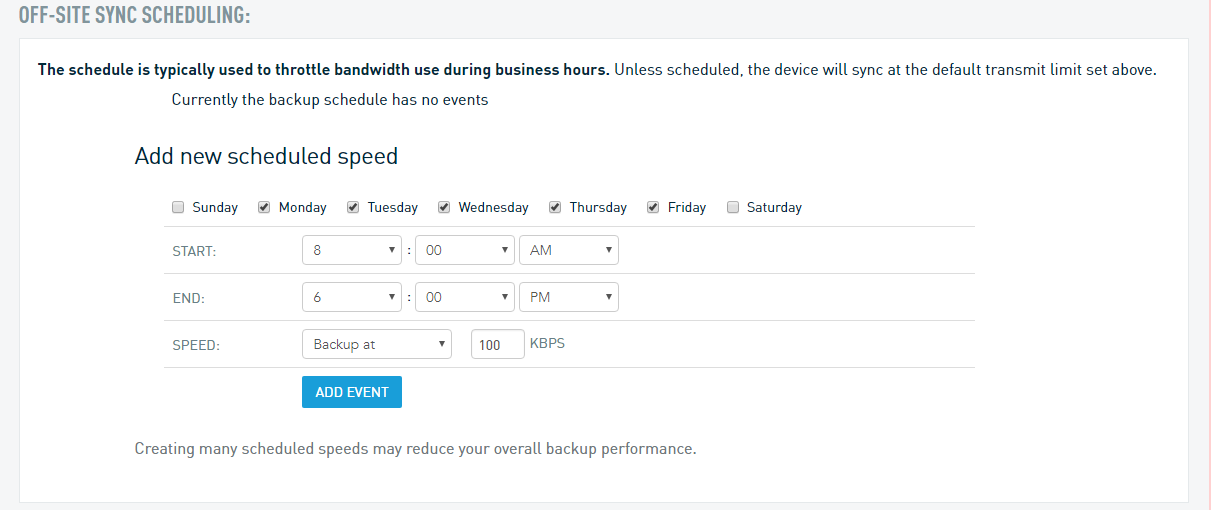Best-Practices to Prevent a RoundTrip
This article describes best-practices you can take to prevent having to order a RoundTrip for a Datto appliance.
Environment
- Datto SIRIS
- Datto ALTO
- Datto NAS
Large Recovery Points
A common reason that partners order RoundTrips is when one or more large or full backups happen on their Datto device, instead of a normal incremental backup. When this happens, the backup needs to be replicated to the cloud by the appliance, but bandwidth limitations often prevent replication within a reasonable timeframe. See Explaining The Inverse Chain And Investigating Large Recovery Points for more information about diagnosing and preventing large recovery points.
Check the Default Transmit Limit
Through the Datto appliance GUI, navigate to the Off-Site Synchronization tab and make sure that the Default Transmit Limit value is set to the correct amount. Run a speed test by clicking the Start Speed Test button. When it finishes, the speed will populate in the box next to the Default Transmit Limit box.
NOTE Datto recommends a default transmit speed of at least 100 Kilobytes (1 Megabit) per second per 1 TB of protected storage. The higher the limit, the faster the device can be synced. The autoconfigure sets the bandwidth to 50% of the current available upstream bandwidth so that the device does not interfere with other actions on the network.
Check Off-Site Sync Scheduling and Throttling Settings
Scheduling Settings
Datto appliances with once-daily offsite replication schedules send the last backup point of the day to the Datto Cloud. If your Datto appliance is not configured to perform offsite synchronization on a daily schedule, a bottleneck of points can accumulate on the device over time, leading to replication backlog. You can verify and make changes to your off-site sync schedule from the Cloud Backup and Retention Policy card on the Configure Agent Settings page of your Datto appliance's GUI.
Throttling Settings
Allowing too little bandwidth to perform efficient replication of backup points to the Datto Cloud can also cause sync bottlenecks. On the Off-Site Synchronization page of your Datto device's GUI, make sure that the schedule is not throttling the appliance's bandwidth more than necessary at any given time.
If you need to make a change to the schedule, use the Backup at value in the Speed field, instead of the Pause Backup value unless necessary. The Pause function will stop any offsite sync in progress, and cause it to restart from the beginning when it resumes, creating a loop of continuous offsite syncs of a single point, which will then cause the appliance's overall offsite synchronization to fall behind.
Check the Cloud Backup and Retention Policy
In the Backup and Retention Settings section of the Datto appliance GUI, make sure that the number of points the device transmits offsite in a day is compatible with your available bandwidth.
If you send more than one point in a day, and offsite sync isn't able to keep up because of bandwidth limitations, your cloud sync will start to fall behind, and the local backup points flagged for offsite replication will accrue.
If you have attempted all of the above recommendations and are still experiencing offsite synchronization issues, please contact Datto Technical Support.



